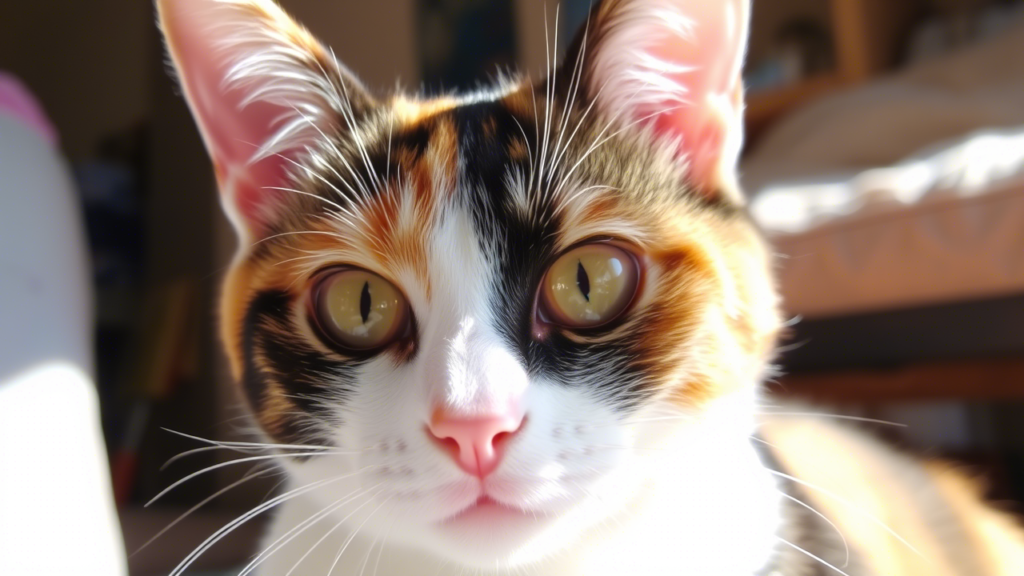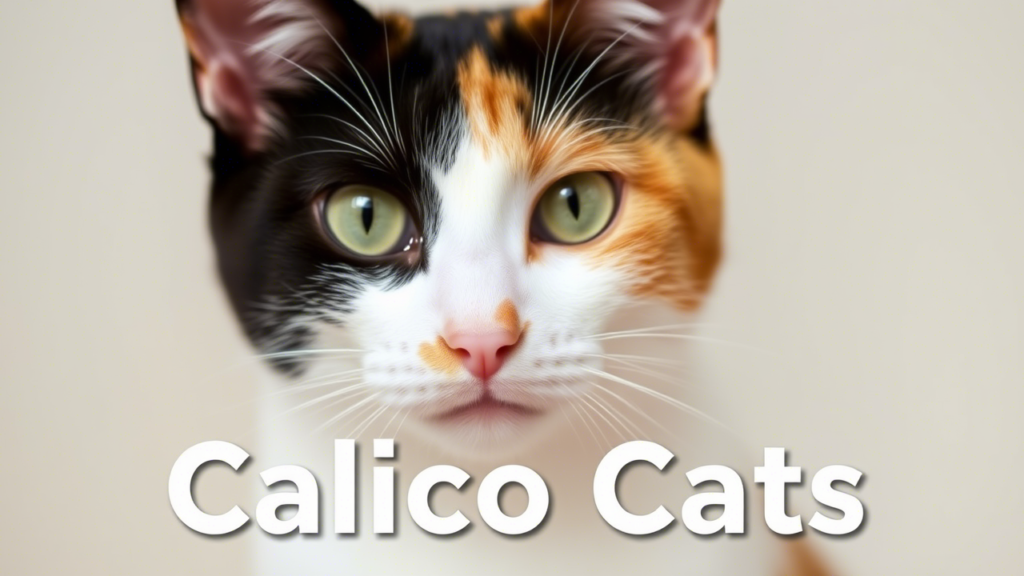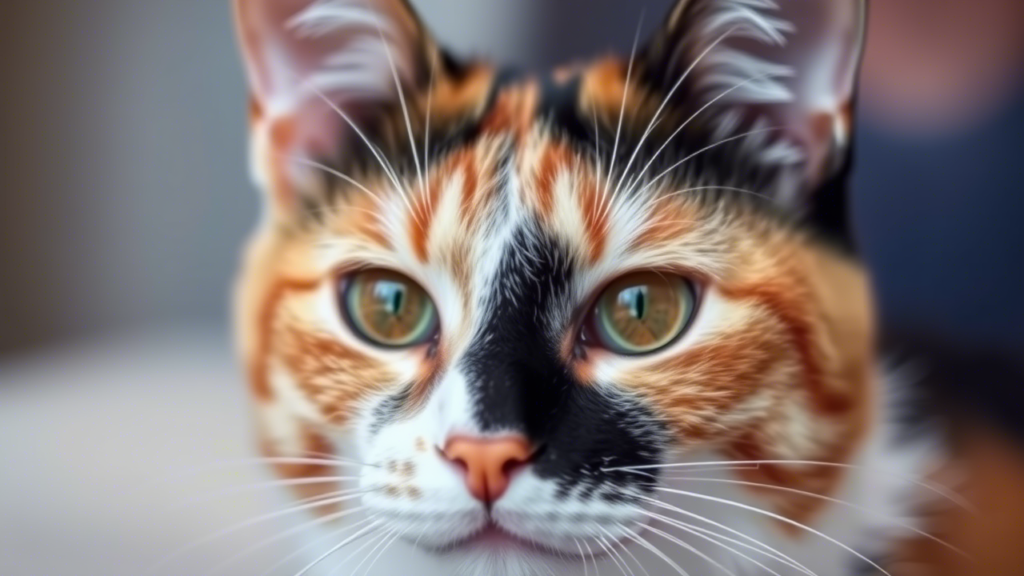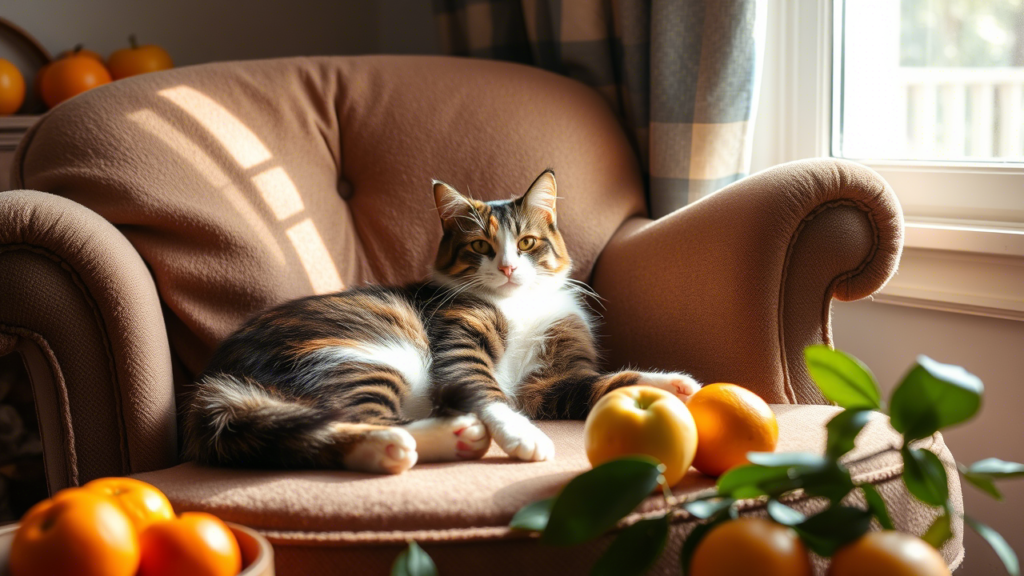What Makes Calico Cats So Unique? The Science Behind Their Coats
calico cats ( breed, autistic, female, price, lucky, personality, are female because, Tortoiseshell calico cat, are always female, rare, for sale, x inactivation )
If you’ve ever come across a calico cat, you’ve probably been captivated by their mesmerizing coat pattern. With their vibrant mix of orange, black, and white fur, these cats seem almost magical, as though their very presence was designed to catch your eye. But what makes calico cats so unique? Is it purely their striking colors, or is there more to the story?

In this article, we’re going to dive deep into the science behind calico cats’ coats. We’ll explain how genetics, biology, and a bit of serendipity combine to create these fascinating felines. By the end, you’ll have a clearer understanding of why calico cats are so special, not just in appearance, but also in the science behind their very being.
Introduction: The Calico Cat Phenomenon
When people talk about calico cats, it’s usually with a sense of awe. Their distinctive tri-color coats make them stand out among other cats. They’re not just beautiful, though; they’re also fascinating from a genetic perspective. While the term “calico” refers to a coat pattern, the science behind how this pattern is formed is what really sets them apart from other felines.
While many people love calico cats for their looks, there’s so much more going on under the surface. From the way their fur is patterned to the rare genetic phenomenon that gives them their unique coloring, calico cats are truly one of nature’s wonders.
Read More:- Wet vs. Dry Cat Food: Which is Better for Your Pet’s Health
What Is a Calico Cat?
Before we dive into the science, let’s first define what a calico cat is. A calico cat is a cat that has a distinctive tri-color coat, usually made up of black, orange (or red), and white. This coloration is made possible by specific genetic traits that influence how pigments are expressed in the cat’s fur.

However, calico cats aren’t a breed themselves. The term “calico” refers specifically to the coat color pattern. This means that calico cats can belong to various breeds, such as the American Shorthair, Persian, and Maine Coon, among others. Their coats, however, are the result of a combination of genetics that’s specific to calicos, making them stand out among other cats.
The Genetics Behind Calico Cats’ Coats
The magic of calico cats lies in their genetic makeup. To understand why calico cats have their unique coats, we need to take a closer look at how coat colors are determined in cats.
Chromosomes and Color Inheritance
In mammals, including cats, the genes responsible for determining coat color are carried on the X chromosome. This is where things start to get interesting. Female cats have two X chromosomes, while male cats have only one X chromosome and one Y chromosome. The key to calico cats’ unique appearance lies in how these X chromosomes behave.
There are two primary color genes in play for calico cats:
- The Orange (Red) Color Gene – This gene is located on the X chromosome and is responsible for the orange coloring in a cat’s fur. If a cat inherits this gene, it will develop an orange (or red) coat.
- The Black Color Gene – The black fur gene is also located on the X chromosome. However, the gene for black fur is dominant over the orange gene. If a cat carries the black gene, it will develop black fur in areas where the black gene is active.
But here’s where it gets really interesting: Because female cats have two X chromosomes, they can inherit one X chromosome carrying the orange gene and one X chromosome carrying the black gene. This allows them to develop fur that is a mix of black and orange, creating the calico pattern. The presence of white fur in calicos is a separate genetic trait altogether and can be added to the mix due to different genetic factors, including the white spotting gene.
Random X-Inactivation and the Calico Coat
So, how does a cat end up with distinct patches of orange and black fur? The answer lies in X-inactivation, a random process that occurs in female mammals. Since female cats have two X chromosomes, one of these X chromosomes in each of their cells will be randomly “shut down” (or “inactivated”). This means that in some areas of the cat’s body, the X chromosome carrying the orange gene will be inactivated, leading to black fur, while in other areas, the X chromosome with the black gene will be inactivated, allowing the orange color to show.

This random inactivation of X chromosomes leads to the characteristic patchy pattern we see in calico cats. The result? A stunning mix of orange and black fur, with white areas appearing where the gene for white fur is active.
Male Calico Cats: A Rare Phenomenon
While female cats can have two X chromosomes, making them the usual carriers of the calico pattern, male cats typically only have one X chromosome (and a Y chromosome). Because of this, it’s extremely rare for a male cat to have a calico coat.
However, male calico cats do exist, but they’re rare, and they must carry an unusual genetic condition known as Klinefelter syndrome. This condition causes male cats to inherit an extra X chromosome, meaning they have two X chromosomes and one Y chromosome. These male calicos are often sterile and are estimated to occur in only 1 in 3,000 calico cats.
Read More:- The Surprising Health Benefits of Owning a Cat: More Than Just Purrs and Cuddles
Why Are Calico Cats So Special?
A Visual Feast of Color
The most obvious reason calico cats are unique is their stunning appearance. Their tri-colored coats—black, orange, and white—create a vivid contrast that makes them stand out. No two calico cats look exactly alike. The distribution of colors can vary, with some cats having more black, while others have a dominant orange hue. This randomness in color distribution makes each calico cat’s coat an artistic masterpiece.
Symbolism and Cultural Significance
Beyond their physical beauty, calico cats are often regarded as symbols of good luck in various cultures. For example, in Japan, calico cats are believed to bring prosperity and good fortune. The famous “Maneki-neko,” or “beckoning cat” statue, often depicts a calico cat, as it’s thought to bring wealth and good luck to its owner.
A Unique Personality
Many calico cat owners claim that their cats possess strong personalities that match their vibrant coats. While this is certainly anecdotal, calicos are often described as independent, feisty, and even a bit sassy. It’s said that calico cats can be a little more demanding of attention compared to other cats. This distinctive personality adds another layer of charm to these already fascinating felines.
Caring for a Calico Cat
Calico cats, like all cats, require proper care and attention to thrive. While their unique coats are a major point of fascination, their health and well-being should always be a priority.
Grooming of Calico Cat
Calico cats come in both long-haired and short-haired varieties. Long-haired calicos, such as Persian calicos, will require regular grooming to keep their coats tangle-free and healthy. Short-haired calicos, while easier to maintain, should still be brushed occasionally to remove loose fur and keep their coats shiny.

Nutrition of Calico Cat
A well-balanced diet is essential for any cat, and calicos are no exception. Make sure to provide your calico cat with high-quality cat food that meets its nutritional needs. Consult with your vet to ensure your cat is receiving the best food based on its age, activity level, and health conditions.
Health Care of Calico Cat
While calico cats don’t have any unique health issues tied specifically to their coat color, it’s important to keep up with regular veterinary check-ups. Depending on their breed, calico cats may be prone to specific conditions, such as heart disease in Maine Coons or respiratory issues in Persians.
Read More:- Why Most Calico Cats Are Female (And What Happens When They’re Not)
Conclusion: The Enigma of the Calico Cat
Calico cats are truly one of nature’s most fascinating creatures. Their stunning tri-color coats are the result of a remarkable interplay of genetics, randomness, and biology. From the science behind their coat patterns to their rare and captivating personalities, calico cats are much more than just beautiful—they’re a living testament to the wonders of nature’s design.
Whether you’re a cat lover or just someone who’s intrigued by the science of animal genetics, calico cats offer a perfect blend of visual beauty and biological intrigue. Their uniqueness isn’t just skin-deep; it’s in their very DNA.
FAQ:
1. Are all calico cats female?
Yes, nearly all calico cats are female, as the genes responsible for their coat pattern are carried on the X chromosome, which females have two of. Male calicos are extremely rare, usually due to a genetic condition called Klinefelter syndrome.
2. What is the genetic reason behind a calico cat’s coat?
The distinctive orange, black, and white coat of calico cats is the result of X-inactivation, where one of the two X chromosomes in female cats is randomly shut down in different cells, creating the patchy color patterns.
3. Are male calico cats sterile?
Yes, male calico cats, due to their extra X chromosome (from Klinefelter syndrome), are typically sterile. They are a rare genetic phenomenon.
4. Do calico cats have special personalities?
Many calico cat owners report that their cats have strong, sometimes feisty personalities. They are often described as independent, sassy, and a bit more demanding of attention compared to other cats.
5. How do I care for a calico cat?
Caring for a calico cat involves regular grooming, providing a balanced diet, and ensuring they receive regular vet check-ups to stay healthy and happy. The specific care needs can vary depending on the breed of the calico cat
